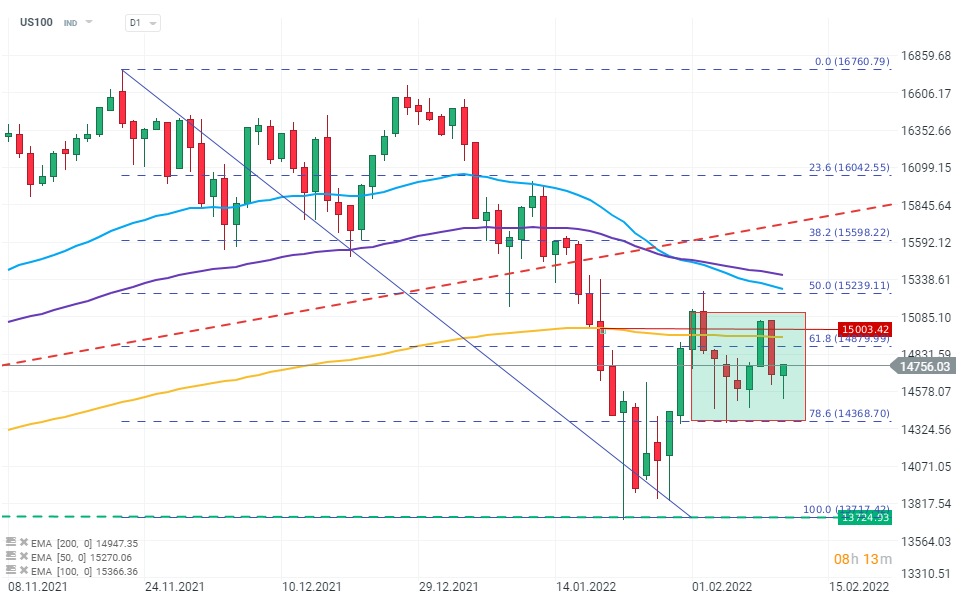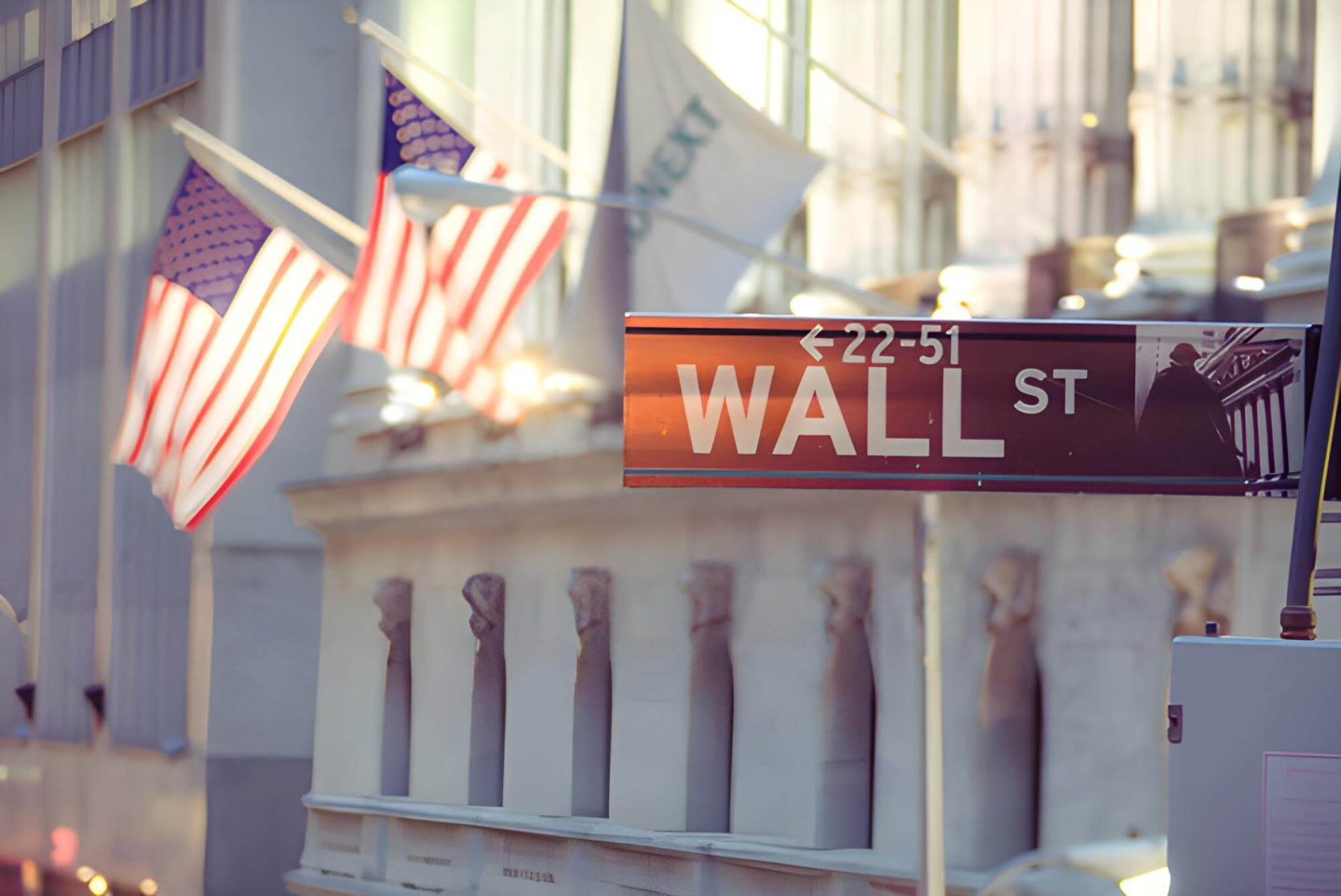The last trading session of the week on the US stock market opens in a slightly better mood. Markets are trying to recover from yesterday's sell-off, but are still hampered by sentiment of massive inflation and comments from James Bullard. Yields on 10-year US Treasury bonds remain at record levels since August 2019.

US100 index chart, D1 interval. Most indices on Wall Street continue to trade in an area of supply and demand consolidation. The index of technology companies is currently attempting to climb and attack the resistance level set by the 61.8% retracement, the EMA 200 (gold line) and the psychological barrier of 15,000 points. Local support remains the area near 14,400 points, which coincides with the 78.6% Fibo retracement. Source: xStation 5
News:
-
US equities are trading at slightly better levels, following yesterday's sell-off triggered by higher-than-expected US inflation and comments from President James Bullard, who advocated a 100 basis point interest rate hike by 1 July. Upon hearing of Bullard's stance, investment banks began to revise their consensus and are even forecasting a 50 basis point rate hike in March 2022. However, many other Fed officials disagreed with Bullard's comments, including Atlanta Fed President Mr. Raphael Bostic, who commented that he has not changed his stance on the trajectory of rate hikes. (3-4 hikes this year).
-
US 10-year yields remain above the psychological 2% barrier.
-
Under Armour (UAA.US) is up nearly 2.6% in early trading today on the release of strong financial results. Adjusted EPS came in at $0.14 per share, beating analysts' expectations by twofold. Revenue also came in better than expectations. However, gross margin is expected to decline 200 basis points this quarter due to supply chain issues.
-
Zillow Group (Z.US) is jumping more than 13% early in today's session on Wall Street following the release of better-than-expected financial results (smaller loss).
Morning Wrap (01.12.2025)
US Open: After a Day Off, Wall Street Opens the Session in the Green
Three Markets to Watch Next Week (28.11.2025)
DE40: DAX loses slightly ahead of the German CPI data 📌Deutsche Borse rebounds on possible Allfunds Group acquisition


